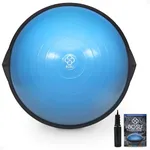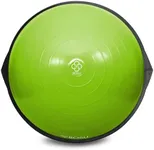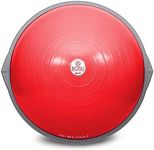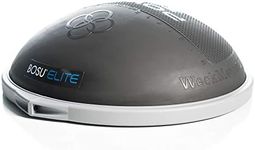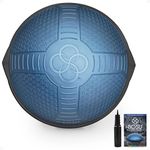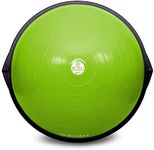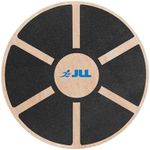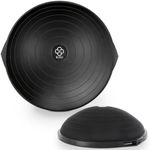Buying Guide for the Best Bosu Balls
Bosu balls are versatile fitness tools that can enhance your workout routine by improving balance, strength, and flexibility. When choosing a Bosu ball, it's important to consider your fitness goals, the type of exercises you plan to do, and your current fitness level. Understanding the key specifications will help you select the right Bosu ball that fits your needs and ensures a safe and effective workout experience.SizeThe size of a Bosu ball is crucial because it affects the range of exercises you can perform and the level of stability it provides. Bosu balls typically come in standard sizes, with a diameter of around 65 cm. A larger ball may offer more surface area for exercises, which can be beneficial for beginners or those focusing on balance. Conversely, a smaller ball might be more challenging and suitable for advanced users looking to increase the difficulty of their workouts. Consider your height and the space available for storage when choosing the size.
Weight CapacityWeight capacity refers to the maximum weight the Bosu ball can safely support. This is important to ensure the ball can handle your body weight during exercises without risk of bursting or losing stability. Most Bosu balls have a weight capacity of around 300 to 350 pounds. If you are close to or exceed this weight, look for a ball with a higher capacity to ensure safety and durability. Always check the manufacturer's specifications to confirm the weight limit.
MaterialThe material of a Bosu ball affects its durability, grip, and comfort. Most Bosu balls are made from high-quality rubber or PVC, which provides a good balance of flexibility and strength. A durable material will ensure the ball withstands regular use and maintains its shape over time. Additionally, a non-slip surface is important for safety, especially during dynamic exercises. If you have allergies or sensitivities, consider the material composition to avoid any adverse reactions.
Surface TextureSurface texture plays a role in the grip and stability of the Bosu ball. A textured surface can provide better traction, reducing the risk of slipping during exercises. This is particularly important for high-intensity workouts or when using the ball on smooth surfaces. If you plan to use the Bosu ball for yoga or pilates, a smoother surface might be more comfortable. Consider the types of exercises you will perform and choose a texture that offers the right balance of grip and comfort.
PortabilityPortability is an important factor if you plan to move your Bosu ball between different locations, such as from home to the gym. A lightweight and easy-to-carry Bosu ball can make transportation more convenient. Some models may come with handles or a carrying case, which can be beneficial if you travel frequently or have limited storage space. Consider how often you will need to move the ball and choose a model that aligns with your lifestyle.
